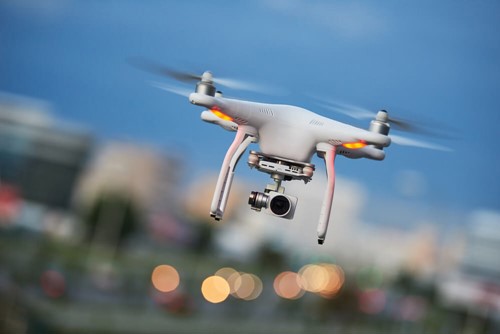How technology is instrumental during crises
Social distancing, lockdowns and hospitals are three of the best-known mechanisms for fighting the coronavirus pandemic. They’re all designed to curtail the spread of contagion across the world.
However, what you may have underestimated is how technology is helping governments, scientists, businesses and the general public. In this blog post, we’ll detail some of the technologies that are being leveraged in the outbreak, including some examples from our community of clients on how they keep their businesses running during these unprecedented times.
Big data and its big impact

When Wuhan, China was quarantined on the 23rd January 2020, to curb the spread of the coronavirus, Chinese authorities acted quickly to institute methods to track, trace and identify the spread of the pathogen, one of which is the health code system.
Integrated directly into the Alipay wallet app, as well as WeChat – China’s version of WhatsApp – health code assigns each user with a QR code with a color ranking, which can either be green, yellow or red.
If your code is green, you’re free to move around under quarantine restrictions. But if you’ve got a yellow or red code, you’re mandated to stay at home or report to an isolation center for treatment.
Your health code changes depending on your behavior. For instance, lots of phone data is tracked by Chinese authorities, including your movements. If you went into a COVID-19 hotspot or came within a certain distance of someone known to be infected, your health code changes, advising you to isolate and restricting your access to public places.
In addition, every day you’re mandated to enter details such as your temperature into the app. You’re required to do this at home - but also in public - wherever Chinese authorities have checkpoints set up, so for instance, supermarkets, pharmacies etc.
All this data has given data scientists plenty to work with and has been instrumental, alongside contagion measures for China to get a hold of their epidemic. The data allows scientists to model the spread of COVID-19 and helped the authorities to make decisions based on data as opposed to guessing.
Drones and helmets monitoring the public

A creative twist on drone usage is the ‘pandemic drone’ being developed by scientists at the University of South Australia. The unmanned aircraft is fitted with a specialized sensor that monitors temperature, heart and respiratory rates, as well as a system to detect people sneezing, coughing in offices, large crowds and lots of other spaces.
The unmanned aerial vehicle (UAV) can detect ailments from around five to ten meters and can spot people about 50 meters away from the drone itself. While it isn’t in operation right now, scientists are fast-tracking the technology to help it become a viable screening tool for authorities to use as the pandemic progresses.
In a similar sort of vein, police in China are using a smart helmet that the wearer can use to detect fevers from up to five meters away, sounding an alarm when an infected patient is detected.
It features an infrared temperature detector, an augmented reality visor, a camera and WIFI, Bluetooth and 5G so any data can be sent to a nearby hospital. The helmet also has facial recognition technology which allows Chinese law enforcement to get details of the subject, including their name and medical history.
According to the manufacturer, it would take a couple of officers two minutes to scan a queue of 100 people, ideal for detecting illness at an airport or line to enter a convenience store.
Video conferencing has become more important than ever

Nations across the world are effectively closing society. This has included shuttering businesses and mandating the general public to remain at home, with exceptions made only for those that are identified as key workers.
This has been tremendously disruptive for many companies, including travel, catering and similar industries. However, for other organizations that offer professional services, or eCommerce, it’s afforded them with the chance to continue business as usual by leveraging technology.
Video conferencing, which has become increasingly important over the last decade, is now a must-have for businesses all over the world.
The British Prime Minister, Boris Johnson, chaired the first-ever video cabinet meeting from his 10 Downing Street residence after contracting coronavirus. He hosted the entire meeting on Zoom, one of the many video conferencing tools available.
Many businesses are taking the same approach as the PM. Halfway through March, Medius instructed its employees to work from home and to make use of Microsoft Teams, an online collaboration tool which marries instant messaging and video conferencing in one application.
It’s technology like this that’s allowed swathes of society to remain productive during these unprecedented times.
How eProcurement keeps business running

The Coronavirus has ravaged global supply chains, with Apple struggling to source key components. The leading smartphone producer has a significant manufacturing operation for its iPhones in Wuhan, which is just emerging from quarantine. After months of lockdown, with workers furloughed, the supply of key electronic components has dried up.
This has disrupted Apple’s supply chain, with Apple CEO Tim Cook explaining to investors on earnings call in February 2020: “There are alternate sources, and we’re obviously working on mitigation plans to make up any expected production loss.”
eProcurement software is well-placed to mitigate these challenges with eSourcing central to the solution. Organizations can use eSourcing to source, analyse and select suppliers, with the ability to rapidly bring alternative vendors into play at the touch of a button. It’s a key tool for organizations seeking to maintain business continuity during crisis situations.
Cloud-based accounts payable software helps preserve supplier relationships

COVID-19 has made paying businesses a tricky affair. In the UK, Morrisons, a leading supermarket supported smaller businesses by offering to pay for goods immediately, instead of the usual 14- or 30-day lead times associated with invoicing. This helped tremendously with cashflow for smaller businesses, perhaps making the difference between keeping a smaller business open or being forced to closed because of cashflow issues.
Even larger organizations struggle to make timely payments and obtain accurate cashflow visibility these days. And that can have a major impact to the business when it comes to suppliers that are critical to the supply chain.
With a cloud-based AP automation solution, like the one offered by Medius, the entire invoice management process can be made in a fully digital process. This means AP workflows run as usual even when the entire company is working from home. Critical supplier invoices can be identified and prioritized to ensure supply chain continuity. And your CFO can stay on top of cash flow and payments from their home office.
Are you taking advantage of technology in the fightback against coronavirus?
Is there technology you’re making use of during the COVID-19 pandemic? Tell us about it on our LinkedIn and Twitter accounts.






